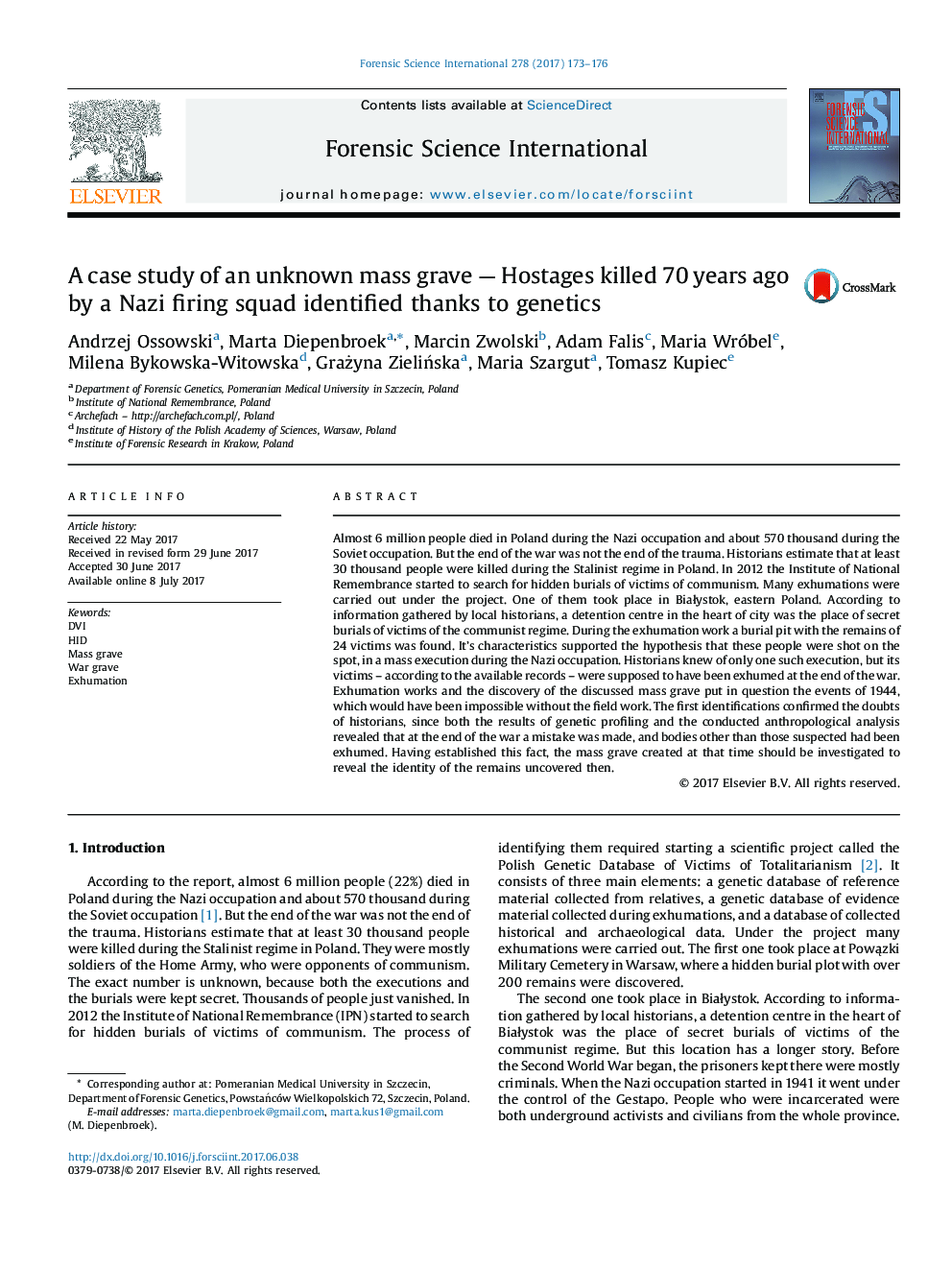| کد مقاله | کد نشریه | سال انتشار | مقاله انگلیسی | نسخه تمام متن |
|---|---|---|---|---|
| 6462204 | 1421972 | 2017 | 4 صفحه PDF | دانلود رایگان |
- A case study based on the analysis of one of the mass graves discovered during an exhumation in BiaÅystok, Poland.
- Grave characteristics suggested that these people were shot during the Nazi occupation.
- Available records suggested that the victims were supposed to have been exhumed at the end of the war.
- The genetic analysis revealed that a mistake was made, and bodies other than those suspected had been exhumed.
Almost 6 million people died in Poland during the Nazi occupation and about 570 thousand during the Soviet occupation. But the end of the war was not the end of the trauma. Historians estimate that at least 30 thousand people were killed during the Stalinist regime in Poland. In 2012 the Institute of National Remembrance started to search for hidden burials of victims of communism. Many exhumations were carried out under the project. One of them took place in BiaÅystok, eastern Poland. According to information gathered by local historians, a detention centre in the heart of city was the place of secret burials of victims of the communist regime. During the exhumation work a burial pit with the remains of 24 victims was found. It's characteristics supported the hypothesis that these people were shot on the spot, in a mass execution during the Nazi occupation. Historians knew of only one such execution, but its victims - according to the available records - were supposed to have been exhumed at the end of the war. Exhumation works and the discovery of the discussed mass grave put in question the events of 1944, which would have been impossible without the field work. The first identifications confirmed the doubts of historians, since both the results of genetic profiling and the conducted anthropological analysis revealed that at the end of the war a mistake was made, and bodies other than those suspected had been exhumed. Having established this fact, the mass grave created at that time should be investigated to reveal the identity of the remains uncovered then.
Journal: Forensic Science International - Volume 278, September 2017, Pages 173-176
